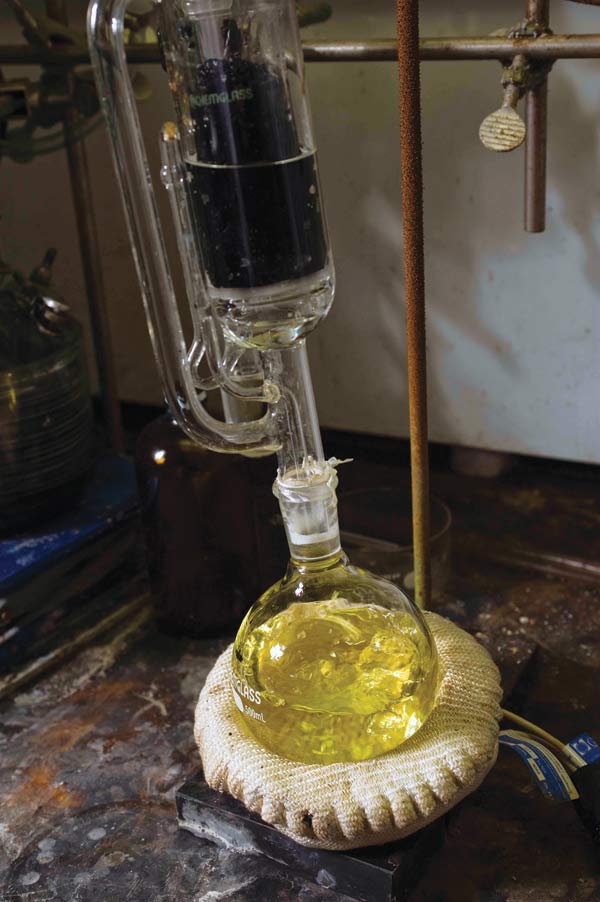Intelligent Machines
Spinning Nanotubes into Fibers
Solutions of carbon nanotubes can be used to make strong, conductive fibers hundreds of meters long.

To remove iron left over from the manufacturing process, the nanotubes are placed in a chamber above a flask of boiling hydrochloric acid. Evaporated acid precipitates in the upper chamber and drips over the nanotubes and back into the flask below, carrying the iron with it.
